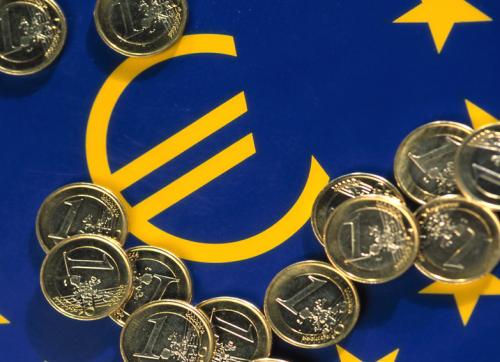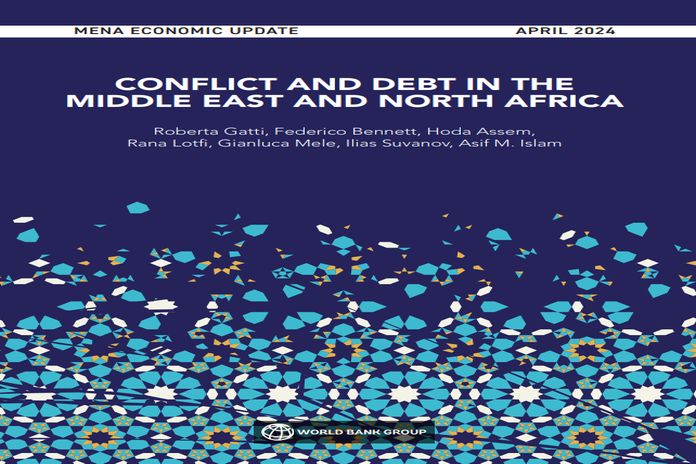
The sovereign debt crisis is often being called the mother of all problems, especially those with no-win solutions (or double-win of any sort for that matter). The consequences of the European sovereign debt crisis, touched off by Europe’s weakest economies in 2011, have been piecemeal yet deep and noticeable far beyond the EU’s borders. As expected, the most negatively affected economies have been those with strongest ties to the European market – such as North African countries. The MENA region was, in addition, projected to suffer much more due to the Arab Spring that also marked year 2011. Moreover, both EU debt crisis and the series of Arab uprisings unfortunately coincided with the deceleration of economic growth in the United States as well as the standoffishness of the U.S. government debt. All of these have negatively contributed to the development of the MENA economies hitherto, and though much has been written on the impact of the euro crisis on the economy of the MENA, not much has been said about the channels through which that “impact” is actually taking place.
Negative economic moods transcend the EU borders through a variety of conduits – trade, investment and remittances – being of importance. The MENA countries are oil economies, and the EU being MENA’s main oil trading partner (according the IMF Europe has accounted for 50-60 percent of MENA’s oil trade since 1970s) transmits volatility by influencing the world’s demand prices for oil. Europe’s sovereign debt crisis has a direct effect on oil demand and currency instability, which further influences the investors’ behavior and commodity prices including oil itself. Though China, Middle East and the rest of Asia increase the global demand for oil and gas (the global average was 87.81 barrels a day (b/d) in 2011, out of which about 14 million b/d was consumed by Western Europe), Europe’s oil demand shrank in 2011 by 0.23 million barrels a day, which negatively affected the MENA, its main oil trade partner.
Yet, the general business outlook was surprisingly still favorable in 2011. The year marked high oil prices which played for the advantage of the MENA, and the oil revenues in fact increased its share on the total GDP compared to 2010. For instance, Jordan’s oil imports bills accounted for about 13 percent in 2010 compared to almost 16 percent in 2011. Morocco, Lebanon, Syria and Tunisia similarly enhanced their oil “notch” for all of them and increased their oil bills by around 2 percent on average. The only exception was Egypt that stagnated at the 2010 level. Thus, the oil fuss caused by the EU debt crisis was partially hedged by the positive spillovers from other oil exporters, yet the subsequent downturn in oil revenues meant a risk to the MENA as the average EU growth rate in 2012 was – 0.4 percent, and the economy has only recently started showing some modest signs of a rebound following the decrease of sovereign debt yields in EU’s peripheral economies earlier this year. For example, Spain’s ten-year government bond yields fell from the 2012-maximum of 6.8 percent to 5.1 percent at the end of January 2013, the OPEC reports.
This development can provide the EU with more breathing space and eventually lead to a betterment of the EU’s economic prospects. This could mean a restart for demand of imported goods and services, of which the MENA is an important player. The ongoing period of Europe’s austerity has additionally harmed the MENA countries as the exports were substantially curbed. Apart from oil, which constitutes about 80 percent of MENA’s exports, the remaining export sectors, such as low-value added industrial products (e.g. garments) or some agricultural commodities, suffered proportionally. Needless to say that despite the struggles for export diversification, the MENA export breakdown has remained untouched for a long time. To go from bad to worse, this tight export structure is additionally accompanied by a high level of market concentration with roughly 50-60 percent of export products reaching just a few EU countries. In addition to that, the export dependence of the MENA countries on the EU is diversified within the grouping. For instance, Libya and Tunisia are tied to the EU with their 2010 exports of about 75 percent. In Syria or Egypt, EU exports accounted just for about a fifth of their total exports, and in contrast, Jordan’s ties to the EU are even looser.
Given this structure, the region and its exports are further exposed to the instability due to the depreciation of the Euro against the U.S. dollar. The impact of the currency development varies from country to country depending on the currency regime. Some countries, like Egypt or Jordan, pegged their currencies to the dollar, and therefore were more affected by the negative trade balances, and the other that pegged their currencies to the Euro suffered more from the loss of exports. This currency “soccer” as well as the very debt issue, and EU’s economic stagnation have deteriorated the employment situation of the MENA nationals in Europe. As a result, their ability to send remittances, a significant part of MENA’s foreign reserves, also worsened. The fact that foreign reserves matter has been demonstrated also in Morocco and Tunisia, which having had substantial euro reserves, were able to hedge their export competitiveness in the midst of the crisis. To add, 90 percent of Morocco’s and Tunisia’s reserves come from Europe.
The answer to how to solve these Catch 22 types of problems, where one debt crisis can trigger off a great economic avalanche, may be straightforward yet not easy to implement. All the remedies – export diversification, lower market concentration on the EU, and a shift from low-tech and agriculture exports – have been certainly tried here and then. Yet, the importance of these reforms should again attract the attention of the MENA’s politicians to hedge their economies from the unnecessary.
The analysis is based on the “European Sovereign Debt Crisis and Its Impact on the MENA Economies (2011)” and complemented by the data from the World Bank’s Sector Brief “Trade, Investment and Development in MENA (2007)” as well as the OPEC’s Monthly Oil Market Report (February 2013).


